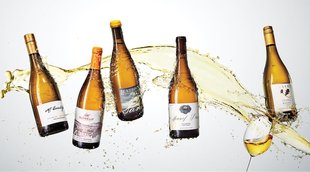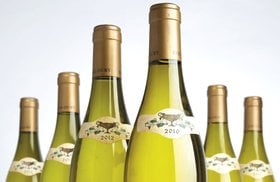Chardonnay: 8 Exciting Bottles To Buy (2025), Wine Styles, Food Pairing
The versatile Chardonnay is known as a “winemaker’s grape” as it’s easy to grow and can be used to craft various wine styles - from sweet to still dry and sparkling.
Some call it the “red wine of all the whites” because it undergoes a fermentation process similar to red wine.
This article explores its viticulture, winemaking techniques, and some fantastic food pairings to go with Chardonnay wine.
You’ll also find out thebest Chardonnay wines to buy in 2024 and the smartest way to invest in fine wine!
Further reading
- Discover everything you need to know about Investing in Fine Wine with this comprehensive guide.
- Also, explore these Crisp, Dry White Wines and Sweet White Wines as well.
What Is Chardonnay?

Chardonnay is a green-skinned grape used to produce white wine, Champagne, and sparkling wine.
Chardonnay grape vines are grown across the globe in Burgundy, Italy, and even in the Sonoma Coast. So, you’ll come across many synonyms like:
- Auxerrois blanc
- Blanc de Champagne
- Auxois blanc
- Chardonnet
- Gelber Weissburgunder
- Melon blanc
- Pinot Chardonnay
The highly adaptable Chardonnay grape takes on unique flavor profiles from the terroir it’s grown in and the oak used.
The Chardonnay grape originated in Burgundy, France, and today, it is grown around the world - from Napa Valley to New Zealand.
Chardonnay wines go by different names in different parts of the world. For example, Chablis and Pouilly-Fuissé are two French Chardonnay wines.
Recent research by the University of California, Davis, suggests that Chardonnay originated by crossbreeding the Pinot Noir, Pinot Blanc, and Gouais Blanc grape varieties. This may have happened centuries ago when the Romans planted Gouais Blanc grapes on French soil along with Pinot Noir.
Now, here’s what you’ve been waiting for:
8 Best Chardonnay Wines You Can Buy In 2024 (Taste And Prices)
No two Chardonnay wines taste the same. We have compiled the best oaked and unoaked Chardonnays of 2024.
- 2014 Domaine Leflaive Montrachet Grand Cru, Cote de Beaune, France
- 2010 Domaine de la Romanee-Conti Montrachet Grand Cru
- 2011 Domaine Leroy Corton-Charlemagne Grand Cru, Cote de Beaune, France
- 1989 Coche-Dury Corton-Charlemagne Grand Cru, Cote de Beaune, France
- 2009 Leroy Domaine d'Auvenay Les Folatieres
- 2000 Leroy Domaine d'Auvenay Meursault Les Narvaux, Cote de Beaune, France
- 2002 Domaine Ramonet Montrachet Grand Cru, Cote de Beaune, France
- 1990 Coche-Dury Les Perrieres, Meursault Premier Cru, France
1. 2014 Domaine Leflaive Montrachet Grand Cru, Cote de Beaune, France
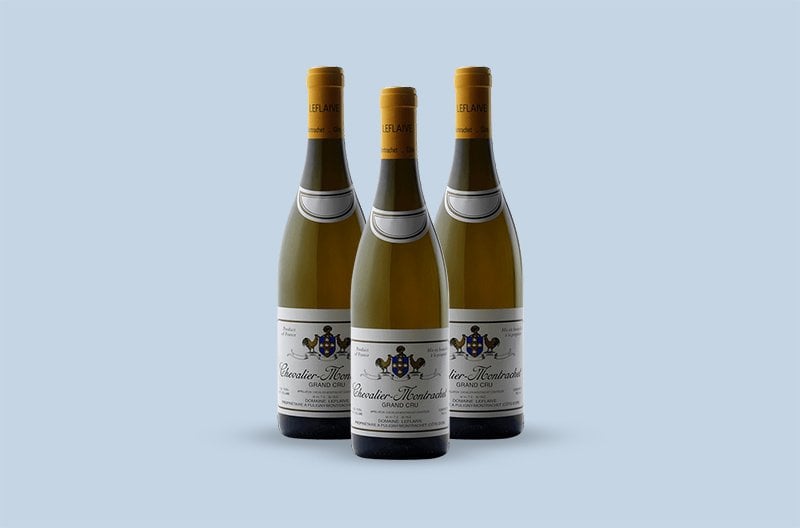
This Chardonnay wine gives off vanilla, lemon, oak barrel, and buttery aroma. On the palate, this white wine displays excellent depth and slightly higher viscosity.
Price of 2014 Domaine Leflaive Montrachet Grand Cru, Cote de Beaune, France: $19,980
2. 2010 Domaine de la Romanee-Conti Montrachet Grand Cru

This white wine by Montrachet has a toasty nose of walnut and vanilla. Full and firm on the palate, this French wine also has buttery and fruit flavors (mostly tropical fruit flavor.)
Price of 2010 Domaine de la Romanee-Conti Montrachet Grand Cru: $10,869
3. 2011 Domaine Leroy Corton-Charlemagne Grand Cru, Cote de Beaune, France

A stunning white wine, this oaky Chardonnay reveals lemon oil, oak, vanilla, dried white flowers, and woodsmoke. The palate showcases buttery flavor and racy acidity.
Price of 2011 Domaine Leroy Corton-Charlemagne Grand Cru, Cote de Beaune, France: $8,729
4. 1989 Coche-Dury Corton-Charlemagne Grand Cru, Cote de Beaune, France
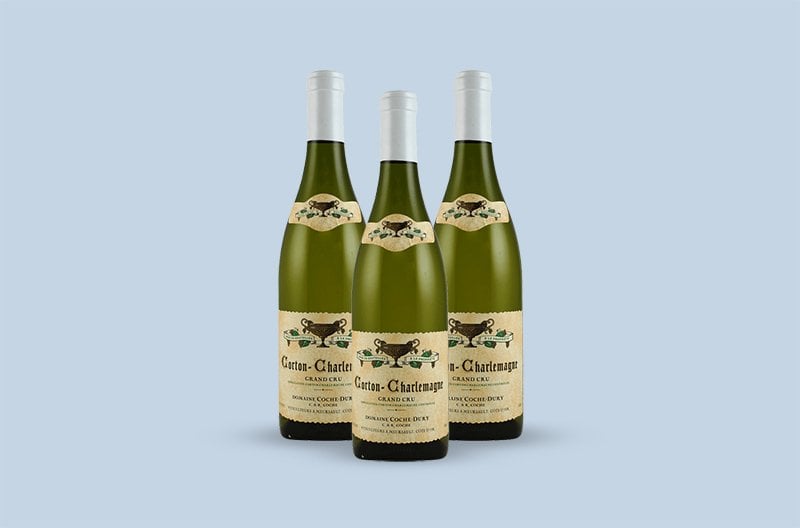
This popular white wine by the prestigious Coche Dury winery has buttery oak notes. The nose of this oaky Chardonnay has pineapple, pear, and vanilla aromas, while the palate showcases a tropical fruit flavor and well-balanced acidity.
Price of 1989 Coche-Dury Corton-Charlemagne Grand Cru, Cote de Beaune, France: $10,599
5. 2009 Leroy Domaine d'Auvenay Les Folatieres

A creamy, buttery Chardonnay, this 2009 vintage has a buttery stone fruit aroma with subtle toasty nuances of vanilla, fine lees, and pear. On the palate, it has a fruit flavor and a citrus finish of green apple.
Price of 2009 Leroy Domaine d'Auvenay Les Folatieres: $7,032
6. 2000 Leroy Domaine d'Auvenay Meursault Les Narvaux, Cote de Beaune, France
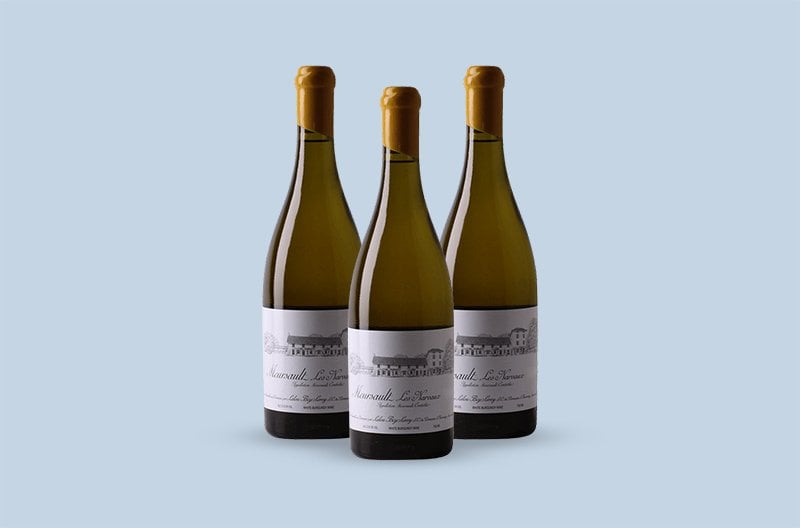
This dry white wine has a tropical fruit and citrus fruit nose with nuances of barrel fermentation. The palate has an intense fruit flavor balanced by lively acidity and subtle minerality.
Price of 2000 Leroy Domaine d'Auvenay Meursault Les Narvaux, Cote de Beaune, France: $5,389
7. 2002 Domaine Ramonet Montrachet Grand Cru, Cote de Beaune, France
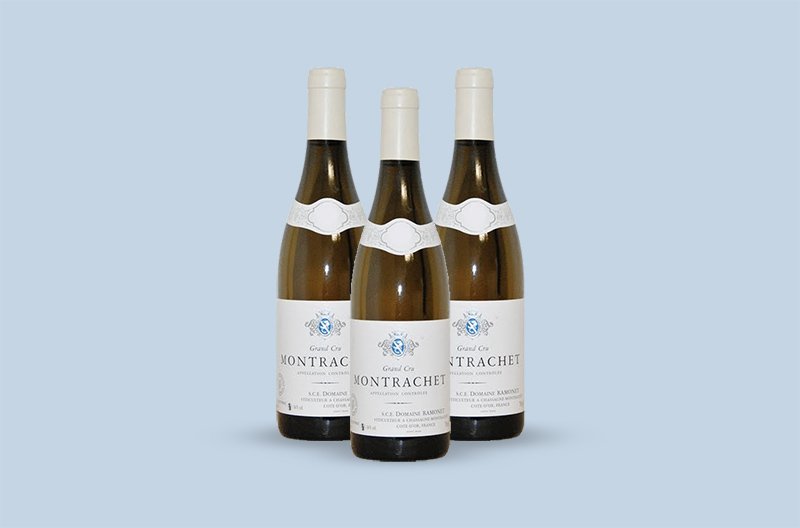
A dry white wine, this 2002 vintage seduces wine lovers with orchard fruit, citrus fruit, and baking spice aromas. This medium-bodied wine displays tropical fruit and buttery notes of malolactic fermentation.
Price of 2002 Domaine Ramonet Montrachet Grand Cru, Cote de Beaune, France: $4022
8. 1990 Coche-Dury Les Perrieres, Meursault Premier Cru, France
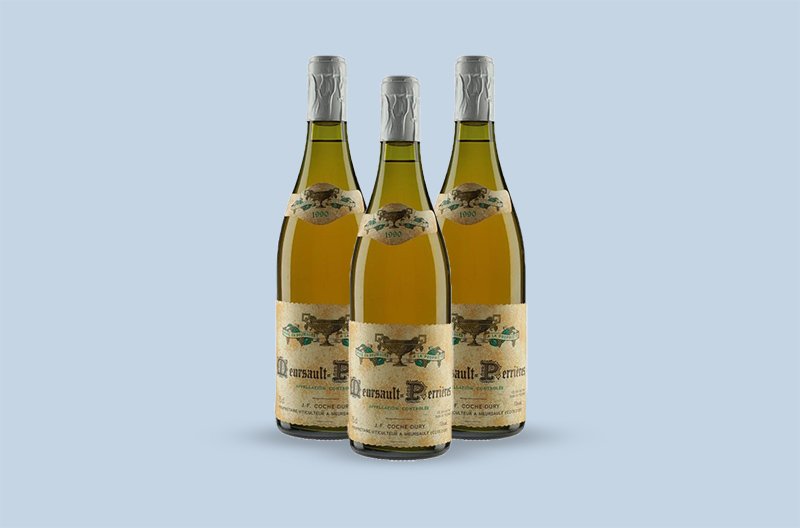
This Chardonnay wine from the Coche Dury winery has rich aromas of tropical fruit (mostly pear) with subtle oak barrel notes. The wine has a buttery flavor balanced by lively acidity.
Price of 1990 Coche-Dury Les Perrieres, Meursault Premier Cru, France: $4,986
Investing In Chardonnay Wine
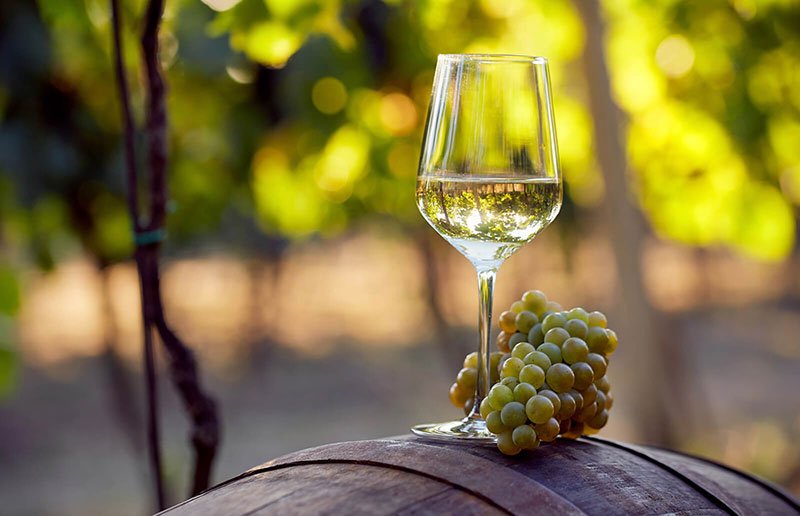
This popular white wine appeals to wine lovers and serious wine collectors alike.
High-quality Chardonnays like white Burgundy can continue to improve for a decade or more, making it one of the most favored white wines for cellaring.
They show great appreciation in value as well.
The price of the exceptional 1996 Chevalier Montrachet wine from the Domaine Leflaive winery grew by 43% in the last five years. Another long-lived Chardonnay is Domaine de la Romanée-Conti Montrachet. Most of Montrachet’s recent vintages are priced at $10,000+ in the secondary market.
The 2002 Leroy Domaine d'Auvenay Chevalier-Montrachet Grand Cru grew by 116% in just nine months (Sept 2020-June 2021) - from $7,098 to $15,337.
But, choosing a great bottle of this popular white wine can feel like picking a movie on Netflix. There are just so many options and variables to take into consideration!
Here’s an easy solution.
Buy The Best Chardonnay And Other Wines Through Vinovest
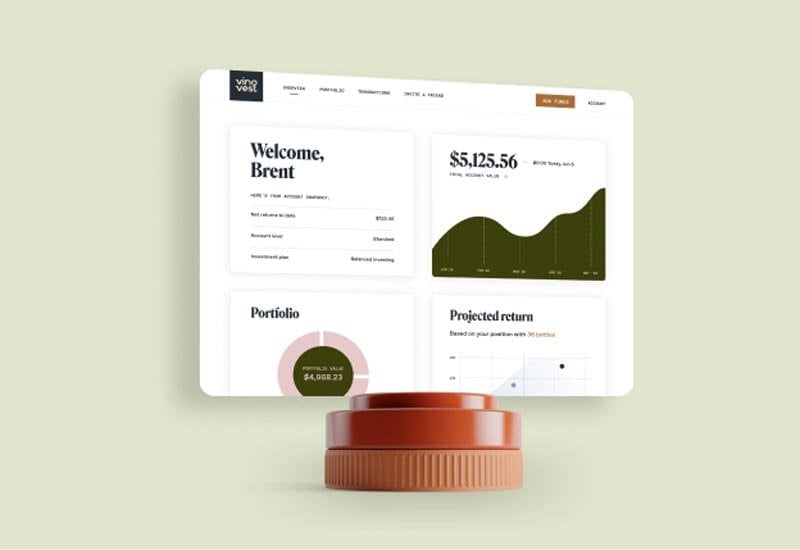
Vinovesthas a world-class wine investment company that helps wine drinkers buy, store and sell the best Chardonnay, Cabernet Sauvignon, Champagne or any other prestigious wine.
How it works
All you need to do is to follow these four steps:
- Sign up on Vinovest.
- Complete the brief questionnaire on your investment preferences and risk appetite.
- Add a minimum of $1,000 to your account.
- Add a fine Sonoma County wine and more to your portfolio!
Benefits of buying wines through Vinovest
- With Vinovest’s Artificial Intelligence (AI) based online platform, you can buy and sell a California Chardonnay, Cabernet Sauvignon, or a Sauvignon Blanc with just a few clicks.
- Vinovest buys your California wine or Champagne at the best wholesale prices. These wines are sourced directly from global wine exchanges, wineries, and winemakers.
- Be it from Sonoma, Argentina, or Chile, Vinovest authenticates every single bottle you buy through them.
- With a professional team of Sommeliers and data scientists, your portfolio will be meticulously curated.
- Vinovest stores your Champagne or California wine in bonded warehouses under optimal conditions.
- Every bottle of Sauvignon Blanc or Chardonnay wine you spend money on is yours.
- Vinovest ensures your wines are safely shipped to your home (if you want to open a bottle) or to your buyer (if you choose to sell it.)
Now, if you want to dive into where Chardonnay grows, how it’s made, the different wine styles, and flavor profiles, read on.
Food Pairing And Serving Of Chardonnay Wine

Here are some pairing suggestions for your next bottle of Chardonnay:
- Unoaked Chardonnay: A light and crisp unoaked Chardonnay can be paired with lemon, white asparagus, and other spring fruit and vegetables, sushi and shellfish, goat cheese, and other fresh cheeses.
- Oaked Chardonnay: Because of the full body and rich texture of an Oaked Chardonnay, you can pair it with heavier dishes like grilled meats, roast chicken (lemon and herb flavor), creamy cow and sheep milk cheese, heavier cream sauces.
Serve your Chardonnay in a white wine glass with a large bowl and rim at 100C (unoaked Chardonnay) to 12oC (oaked Chardonnay.)
Wondering how many carbs are there in Chardonnay?
A glass of dry Chardonnay (5-ounce serving) has 2-4 grams of carbs.
8 Interesting Facts About Chardonnay Wine
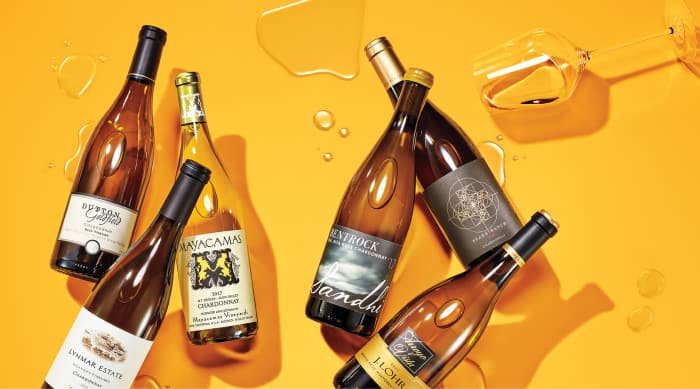
Here are some more exciting facts about Chardonnay.
1. Chardonnay can grow almost everywhere.
With 210,000 hectares planted worldwide, Chardonnay thrives in both the Old World and the New World wine regions.
What are Old World and New World wine regions?
Old World refers to the European wine regions that use traditional winemaking techniques for fermentation (like using oak barrels.
New World refers to the Americas (like Napa Valley) and other wine regions that use new winemaking technologies.
2. Chardonnay’s production numbers surpass Pinot Noir in Burgundy.
Burgundy is often associated with red Pinot noir wine. But, this white wine accounts for 60% of Burgundy’s wine production.
3. A best seller in the US
Chardonnay is the best-selling white wine in the US, with close to 900,000 bottles consumed per year.
4. Blanc De Blancs Champagne are 100% Chardonnay
The most popular Champagne wines are a blend of Pinot Noir, Chardonnay, and Meunier. Blanc de Blancs Champagne is typically made up entirely from the Chardonnay wine grapes.
5. A Queen’s favorite!
Around 800 AD, Luitgard, the wife of Franconian Emperor Charlemagne, hated the way red wine stained her husband's beard. So, she ordered the white grape to be planted in the vineyard. This area, Corton-Charlemagne, is now known for some of the best white Burgundy wines.
6. One of the First Award-Winning Californian White Wines
The 1973 vintage of Chateau Montelena Chardonnay starred in the famous 1976 Judgement of Paris tasting, putting California Chardonnay on the international white wine map.
7. The ‘Red Wine’ of Whites
Chardonnay is known as the red wine of the whites because of two unique vinification stages - barrel fermentation and malolactic fermentation.
8. The Most Popular Baby Name
In 2002, a popular UK TV show, “Footballers’ Wives,” had a central character named after the grape variety. Soon, Chardonnay became a trending baby name.
Chardonnay Wine Regions
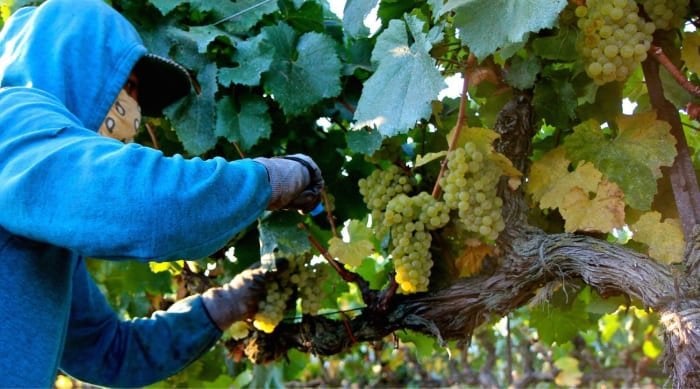
Chardonnay is grown in almost every wine region of the world.
1. France
Chardonnay is the second most planted grape in France.
Besides being a key grape in the Champagne blend (along with Pinot Noir and Pinot Meunier), this grape variety also produces exquisite varietal and white blends - especially white Burgundies.
White Burgundy is known for its buttery flavor with elegant finesse.
Pouilly Fuisse Chard wines are also close competitors with delicious oak flavors.
The Chablis appellation has also gained international recognition for its exceptional Chardonnay wines. Chablis is a simplistic wine that showcases the terroir of the wine region.
Some other notable Chardonnay appellations are Languedoc, Alsace, the Loire Valley, and Jura.
2. North America
The largest Chardonnay white wine producing wine region in North America is California.
California Chardonnay is known for its tropical fruit flavor and is produced in two central regions: Sonoma County and Napa Valley.
Sonoma County regions like Los Carneros produce Burgundian style Chardonnays.
These wines are also produced in Napa Valley, Santa Barbara County, and the Central Coast in California, New York, and Oregon.
Some great California Chardonnay wines are Jeff Gordon Cellars 2012 Carneros Chardonnay and Russian River Chardonnay by Jordan winery (Sonoma Coast) and Napa Cellars Chardonnay (Napa Valley.)
3. Australia and New Zealand
Although the grape variety was introduced in Australia in 1832, it took off in the 1950s. Chardonnay wines are most prominent in South Australia.
Australian Chardonnay wines are fruity with an approachable acidity.
Although Sauvignon Blanc surpassed Chardonnay in New Zealand, Chardonnay gained popularity in Canterbury, Marlborough, and Nelson. Here, the winemaker focuses on lean wines with noticeable acidity.
4. Italy
Chardonnay was often interplanted with Pinot Blanc in Italy due to their similar appearance. That’s why Chardonnay and Pinot Bianco blends are quite common.
This grape variety is also blended with other Italian white wine grapes like Albana, Cortese, and Favorita and is characterized by authentic oak flavors.
Most plantings of the Chardonnay grape variety are found in Sicily and Apulia. In Lombardy, it is used to produce spumante (sparkling wine.)
5. Other Chardonnay Regions
This popular white wine is also produced in South Africa, Greece, Austria, Bulgaria, Croatia, Germany, Hungary, and England.
The Viticulture Of Chardonnay Grapes
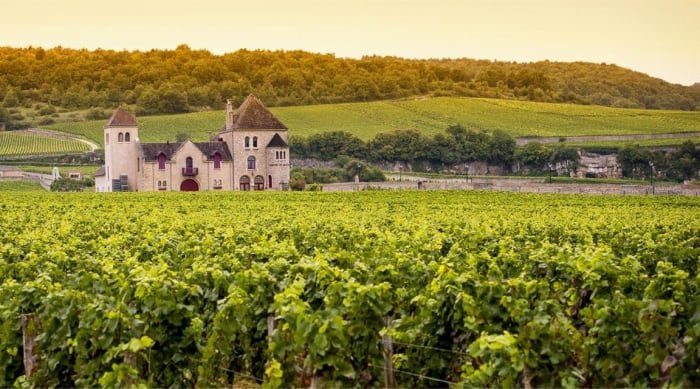
A Chardonnay vine has substantial leaf cover making it difficult for the clusters to get the energy and nutrients. To counter this problem, the winemaker uses canopy management and aggressive pruning in the vineyard.
During the harvest period, Chardonnay rapidly loses its acidity once it ripens.
This white grape is an early budding vine - perfect for regions with short growing seasons. In Burgundy vineyard plots, it is harvested before the autumn rain starts.
How Different Climates Affect The Taste Of Chardonnay Wines

Since Chardonnay grapes are terroir driven, a Chardonnay from Sonoma County will taste different from white Burgundy.
A. Cooler Climate
Cool-climate Chardonnay white wine is lighter and more elegant.
It typically has a citrus flavor and high acidity. Its fruity flavor includes green apples, pear, and plum.
Cooler Climate Regions: Burgundy, Champagne, Germany, Austria, Northern Italy, Ontario, Sonoma Coast (Sonoma County), Argentina, New Zealand, Chile
B. Warmer Climate
The Chardonnay grape from warmer regions produces wines with less acidity and strong tropical fruit flavor.
Warmer regions: Spain, Southern Italy, California (Sonoma County), South Australia, and South Africa.
Now, why is there a confusion between Chardonnay and Pinot Blanc?
How is Chardonnay Different from Pinot Blanc?
This popular white wine is often confused with Pinot Blanc because they look similar and produce a smooth, semi-dry white wine.
Here are the subtle differences:
- Grape color: Chardonnay has a golden-green color, while Pinot Blanc is grassy green.
- Vines: Chardonnay grape clusters are cylindrical to conical in shape. Pinot blanc grapes grow in small bunches surrounded by dark-green leaves.
- Influence of Oak: Mature Chardonnay has a buttery flavor and oak influences, while Pinot blanc producers are still experimenting with oak.
- Sparkling wine vs. Champagne: Pinot blanc is sweet, crisp, and light, making it a favorable choice for sparkling wine and dessert wine. The Chardonnay grape is the number one choice for producing Champagne.
Chardonnay Winemaking Techniques
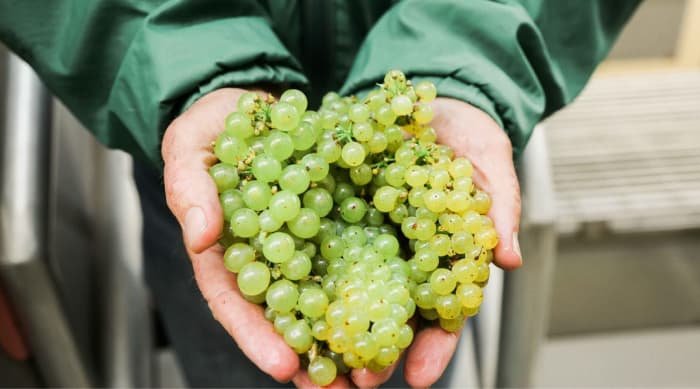
Here are the winemaking techniques typically practiced by a Chardonnay winemaker:
- Clusters are pressed in whole bunches before being moved to fermentation tanks for fermentation.
- After fermentation, the winemaker performs malolactic fermentation.
Malolactic fermentation converts the malic acid into softer lactic acid giving the wine a buttery texture. The winemaker can also use an oak barrel for malolactic fermentation to give the wine a sweeter taste and buttery texture.
Cold fermentation gives the wine fruit flavor.
- After fermentation, the wine is aged in an oak barrel. The time spent in oak determines the taste of the wine. The winemaker also amplifies the contact with the lees by “stirring up” the wine while aging.
Let’s take a look at the different styles of wine made from the Chardonnay grape.
The 3 Different Styles Of Chardonnay

There’s no surprise that this versatile white wine grape produces a range of wine styles.
A. Oaked Chardonnay
Oaked Chardonnay is aged in oak barrels and is exposed to more oxygen, giving the wine a sweeter taste.
Oaked Chardonnay has a full body, rich texture, and oak barrel aroma of vanilla and butter. Oaky Chardonnay has a creamy, buttery taste, with hazelnut and caramel nuances.
B. Unoaked Chardonnay
Unoaked Chardonnay or naked Chardonnay wine is aged in stainless steel tanks that limit its exposure to oxygen. Unoaked Chardonnay white wine is dry, crisp, and refreshing.
C. Sparkling Chardonnay (Blanc de Blancs)
Blanc de Blanc Champagne is a sparkling wine mostly made from 100% Chardonnay grapes. This sparkling wine has a stronger citrus taste with lively acidity.
Chardonnay Wines: Taste And Characteristics

Chardonnay has some of the most distinct flavors:
- Primary Flavors: The primary flavors of Chardonnay range from lemon zest to chalky limestone. Chardonnay also showcases intense fruit flavors of tropical fruit and buttery scents.
If made from ripe fruit, the wine is less acidic and has a stronger fruit flavor. Also, Chardonnay wines that go through malolactic fermentation have a buttery aroma, fruit flavor, and a creamy texture.
- Secondary Flavors: Chardonnay wines also reflect the terroir. Depending on aging, the wine can have coconut, vanilla, stone fruit, and baking spice. As Chardonnay ages, its taste changes. The fresh fruit flavor fades, and spicier flavors come to the foreground.
How Is Chardonnay Different From Pinot Grigio (Pinot Gris) and Sauvignon Blanc?
Chardonnay, Pinot Gris (or Pinot Grigio), and Sauvignon Blanc are all white wines with lively acidity, but here are a few key differences :
- Chardonnay is richer, fuller-bodied, and buttery, while wine made from the Sauvignon Blanc grape varietal is lighter, crisp, and citrusy.
- Compared to Chardonnay’s creamy flavors, Pinot Grigio has strong tart notes.
Is Chardonnay sweet or dry?
Chardonnay can be sweet or dry, depending on the time of harvest.
If the grape is harvested early, the wine is dry. If the grape is harvested at the end of the harvest period, it will have higher sugar content, and the wine will be sweet.
But, Chardonnay can also give you an illusion of “sweetness.” Aging in oak makes the wine absorb the sugar compounds in oak, giving it a perception of sweetness.
Own An Exceptional Chardonnay Wine
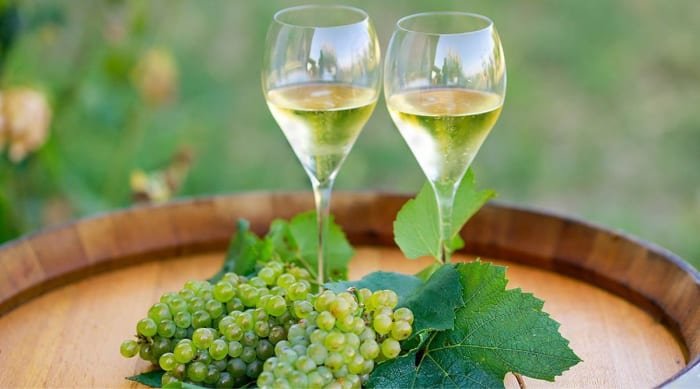
While winemakers love experimenting with its versatility and buttery flavor, wine drinkers revel in the subtle complexities of Chardonnay wine!
If you want to add the best Chardonnay bottles into your wine portfolio, you could do it hassle-free through Vinovest.
Just sign up now and get ready to build your online wine investment portfolio.
